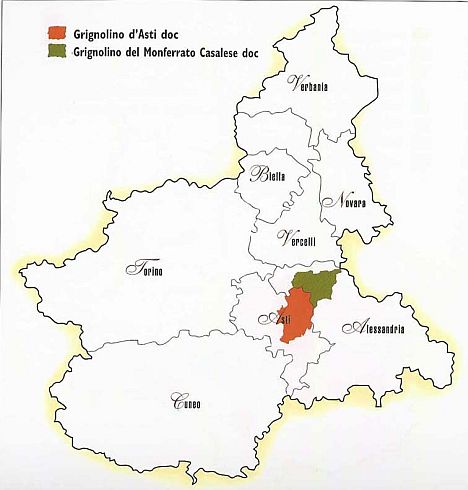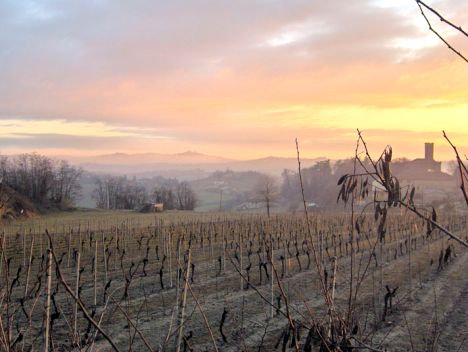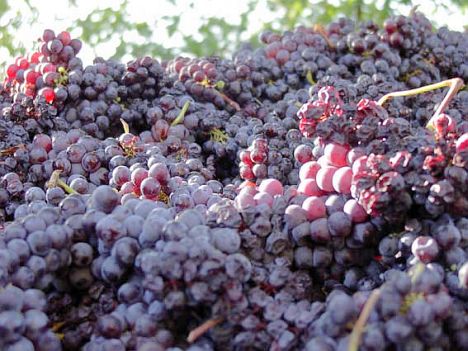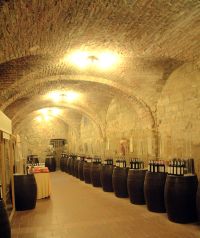The province of Alessandria in Piedmont covers a particularly large area and includes five distinct wine-growing areas: the Acquese, the Ovadese, the Gaviese, the Tortonese and the Casalese, derived from the names of the main towns of Acqui Terme, Ovada, Gavi, Tortona and Casale Monferrato. They represent the easternmost part of southern Piedmont (from the Langhe to Tortona, geologically it is defined as Bacino Terziario Piemontese, in the Oligocene a wide gulf filled with water). This province produces a considerable number, but above all a considerable variety of quality wines and is distinguished from other areas by a significant viticultural biodiversity.

In this article we are talking about one red grape variety in particular: Grignolino, which the people of Monferrato Casalese (DOC Grignolino del Monferrato Casalese) have in their hearts. Only people as stubborn as the local people have been able to save this wine from the tendencies of international taste, which courts the public's favour with flattering sentences such as the following: "( ) The 1997 Merlot might be called liquified Viagra. An incredibly sexy nose of smoke, black fruits, cappuccino, and toasty wood is followed by an expansive, terrifically concentrated wine with a sumptuous texture, no hard edges, beautifully integrated acidity and tannin, and a long, 35 second finish. (...) this stunningly aromatic, multi-dimensional wine." So the Nutella wine or the "liquid Viagra" of the nineties, bombshell in color, full in the mouth and dear to Robert Parker, author of the quoted remark. Something like that could have killed the Grignolio, but it didn't. The resistance is stirring on the right bank of the Tanaro River, at the bottom of the Grignolino. The main actors are the farms that have written the recent history of this wine such as Bricco Mondalino dei Gaudio in Vignale, Vicara with Domenico Ravizza in Rosignano, Carnevale in Cerro Tanaro and several others.
Until the 1970s, Grignolino was hardly bottled at all in its production area; the grapes or the cask wine were sold to the prestigious bottlers in the Alba area, such as Fontanafredda and Marchesi di Barolo. These were happy about a good sale of Grignolino above all on the Turin market. However, an awareness for the own terroir in Monferrato is now slowly building up and it is gradually recognized how much growth potential this marvelous and perfectly suitable territory still has.
More reality than appearance
A very pretentious Belgian journalist once arrogantly dismissed Grignolino: it had no colour, it had no perfume, it had no flavour. Completely wrong. The color of a wine creates a certain expectation that is often taken over by the other senses. In the case of Grignolino, this can be deceiving. The superficial taster sees a light color and is already convinced that the wine is lean and thin. That the Grignolino is a wine that does not have to please everyone is another question, however, one should at least approach it without prejudices.
A good Grignolino shows itself in a bright ruby without violet shades. Its fruit reminds above all of ripe grapes. As a true Piedmontese, you often can't discover the wine at the first attempt, not in the nose, not in the mouth: you should try it at least two or three times, because the delicate red hue combined with a lot of tannin and very dry and spicy impressions in the mouth cause a certain perplexity in the first moment. On the nose you can smell raspberries and hagbutte, white pepper, cloves and in the complex you also perceive a "wild" note, more from a forest plant than a cultivated one. Not for nothing Veronelli defined this wine as anarchistic.
The tannin of Grignolino comes from the small berries, which contain little pulp and many seeds - up to five - which release tannin during fermentation. To obtain softer wines, some producers separate part of the grape seeds from the must during alcohol fermentation. However, the seeds are also the seat of some spicy aromas, which are part of the typicality of this wine. The finish, marked by tannin, is often more persistent than that of the more muscular Barbera wines produced on the same land.
 |
| A vineyard after pruning |
In some texts it is written that Grignolino is a wine with low alcohol. This was due to the earlier cultivation of inferior clones and grapes that gave inadequate results in terms of ripeness and quality. Today, the best wines from Grignolino, especially those from clay-limestone marl soil, are thirteen percent alcohol by volume or more, depending on the vintage and sugar content.
In the vineyard
The Grignolino is very fertile. It has serrated large leaves that turn yellow in autumn instead of red, as in the white varieties, indicating already the low amount of red pigments. The variety is not suitable for fertile soils. In case of overproduction, the grapes would not ripen well and partly only turn pink or even remain green. In addition, because of the compactness of the grape, they could be more easily attacked by gray mold. The fruit must be partially exposed to the sun, otherwise it will not colour; however, too much exposure to the sun, especially in warm years, provokes burns and the drying out of the berries. Grignolino therefore needs very careful care, which begins with the choice of location and vineyard base and continues through to vinification.
The "two Grignolinos
There are two DOCs for Grignolino, Grignolino d'Asti and Grignolino del Monferrato Casalese. "One too many" is the popular opinion because of the small area under cultivation of barely 1,000 hectares. But local patriotism hardly allows an approximation, and there are already two opinions about the origin of the grape variety: according to the Astigiani, it would come from Portacomaro, a district of Migliandolo; according to the Monferrini, however, the cradle would be Rosignano or Olivola. In any case, these areas are not far apart, only about twenty kilometres as the crow flies, and both are on the left bank of the Tanaro river. However, the characteristics of the soils are different. Grignolino d'Asti is found, at least in part, on young, sandy soils, while Monferrato Casalese has very clayey marl soils, with a rocky substrate called "Pietra da Cantoni", a very light-coloured and not very compact marl sedimentary rock, from which blocks used to be obtained for building.
 |
| Gringolino grapes after the harvest |
Grignolino from sandy soils is airy, elegant, fragrant, light and early drinking. Grignolino from Casalese is fuller-bodied and tannic, "wilder" in youth, and storable. The best Grignolino wines peak in the second year, are still very good in the third, and can hold positive surprises later.
Food pairings
Grignolino is a typical "food wine" as the Anglo-Saxons say, meaning a wine to go with food. It goes well with many dishes, such as risotto, ravioli, soups made with legumes or white meat. It is also excellent with some spicy fish dishes, for example fried sardines or anchovies. But perhaps the best combination is with cooked salami (salame cotto), a typical Piedmontese sausage, quite fat and strongly spiced, accompanied by crusty Monferrina bread.
Many combinations can be tried for themselves by taking part in a summer walk among the wineries of Monferrato. Slow Food organizes this event with the Enoteca Regionale del Monferrato every June under the title "Grignolino in Grignolino". Food is provided by the families of the winegrowers. Everyone is welcome, both Grignolino connoisseurs and the curious.
The "Temple of Grignolino
 |
| The "Temple of Grignolino |
The "Temple of Grignolino" is undoubtedly the Enoteca Regionale del Monferrato in Vignale, in the 18th century Callori Palace. The building was already the residence of the Counts Callori of Vignale and was acquired by the Piedmont Region in 1977. In the historic wine cellar you can taste Grignolino and learn about the mostly small and lesser known producers. The wines are only admitted to the exhibition if they have been confirmed by the strict tasting commission.
The DOCs
Both Grignolino d'Asti and Grignolino del Monferrato Casalese can be fermented with up to 10% Freisa (this must already be done in the vineyard and the grapes must be harvested together), with the main aim of improving its colour. Nevertheless, the most prestigious producers tend to process it purely to emphasize its originality.
A selection of Monferrato Casalese wines can be tasted at ProWein 2008, presented at the stand of the Province of Alessandria, Hall 3 C60.
Translation by Katrin Walter